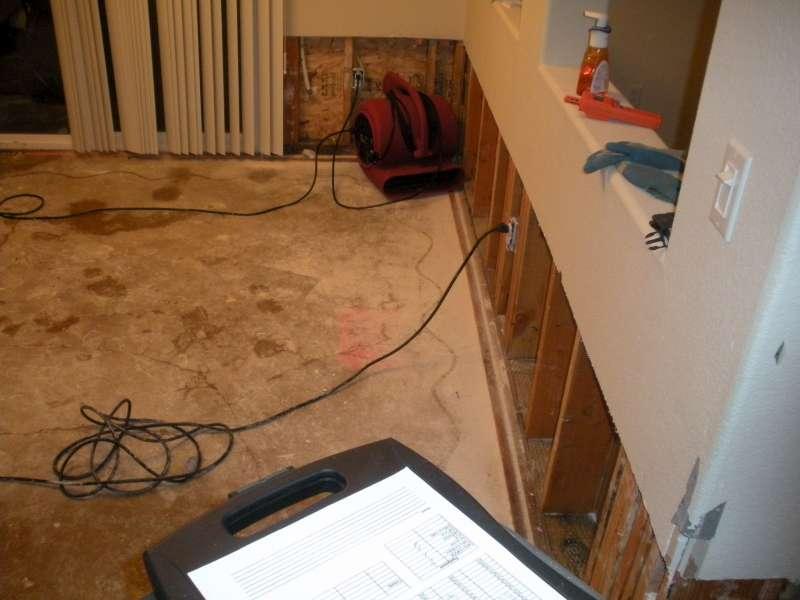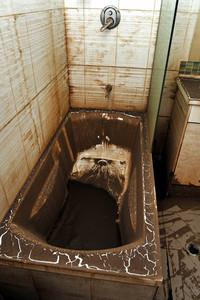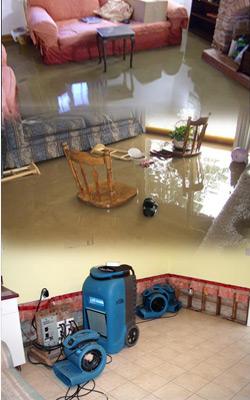Water Damaged Floors

One of the hardest parts of the house to fix is water damaged floors. Floors are vulnerable and fixing one can be a challenge. Since there are different types of floorings, the method of fixing them varies as well. There are certain techniques to be used for each flooring material.
Although the flooring may look good at face value, you won’t really know what is going on underneath. If it has undergone water damage, for sure, water has already seeped in the floor’s cracks. If you don’t see any problem on the surface of the flooring there is a high chance that the problem is underneath the surface.
Although flooring can be hard to repair, don’t be too quick in replacing them. They can still be salvaged with the right repairing techniques. Saving your flooring will only be successful if you do it methodically. Start by assessing the situation and the problem with your flooring and decide on the methods to be done.
Here is a step by step guide in helping your fix your water damaged floors:
1. The first step is to always assess the problem. You may be anxious in fixing the floors immediately but you won’t be able to if you don’t know the extent of the damage. Knowing if the problem is minor or a major one will help you determine what to do. If the damage is minor, a clean-up process will be good enough. However, if your wood is already warping, you have to replace them already.
2. When you clean hardwood water damaged floors, you have to make use of a soft bristled brush. You will be scrubbing the floor down and you really don’t want to scratch your hardwood flooring. Use a detergent-water mixture and keep scrubbing to remove dirt and mud. Also make sure that you clean the corners and cracks thoroughly. This is where the mud can seep through underneath your surface. Clean up the mud before it dries out as it can be easier. After scrubbing, dry the floor.
3. If you are cleaning laminate floors, all you have to do is use a mop to absorb all the water and use a dehumidifier to dry out the moisture. Fortunately, laminate floors are tougher than wooden floors when it comes to water damage that is if you don’t leave the water on the flooring for a long time. Also, laminate floors have sections that are locked together, so if you only need to repair one area, the other parts won’t be affected.
4. If your floorboards are already warped, it is time to remove and replace them with new ones. Make use of a pry bar and saw and take out your damaged floorboards. Now, you have to shop for new floorboards for replacement. Make sure you have the same color and pattern just like the old ones. Once you have the new floorboards, you can install them. Floorboards are easy to install; it has a tongue and groove design that fits easily.
5. Checking the sub floor is always a must. Again, when dealing with water damaged floors, you’ll never know if there is a major problem going on underneath your flooring. Most sub floors are made of plywood, once water seeps in to the sub floor, it will easily get damaged too. If this happens, you will need to replace your sub floor as well. If you don’t, the moisture in your old sub floor may damage the integrity of your whole flooring. On the other hand, if your sub floor is made of concrete, then you don’t have to replace them but you must check if moisture has seeped in. If you suspect that some moisture has seeped in, get a blower, dehumidifier or a fan and dry it up immediately.
6. Floorboards that are stained but not warped don’t need any replacement. You can fix the problem through the sanding down process. You will apply oxalic crystals after you sand down your stained floorboard. After that, you can put a lacquer finish on the wood with the same color as your existing floorboards. Nonetheless, if your floorboards are warped and you have replaced them, you will still to sand down the area that you are replacing. You will have to re-stain them together to make your entire flooring look even and the same. After you stain the new floorboards, leave it out to dry.
7. Once the stained floorboards are dried up, you can now apply two layers of polyurethane on your floorboards. Apply the first coating and then wait for it to dry up. Once it is dry, apply the second coating and wait for it to dry out as well. If you are sure that everything is dry, the floor can now be used once again.




